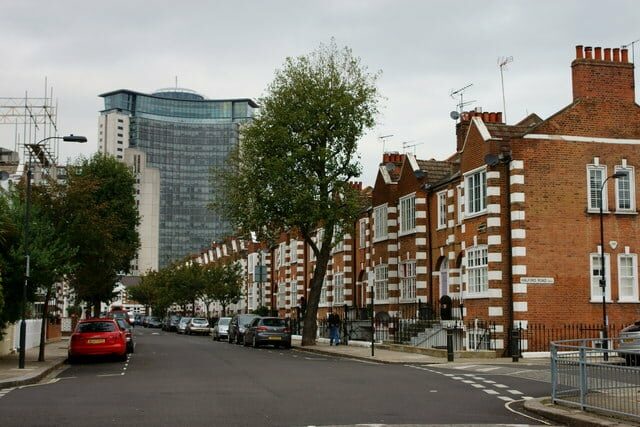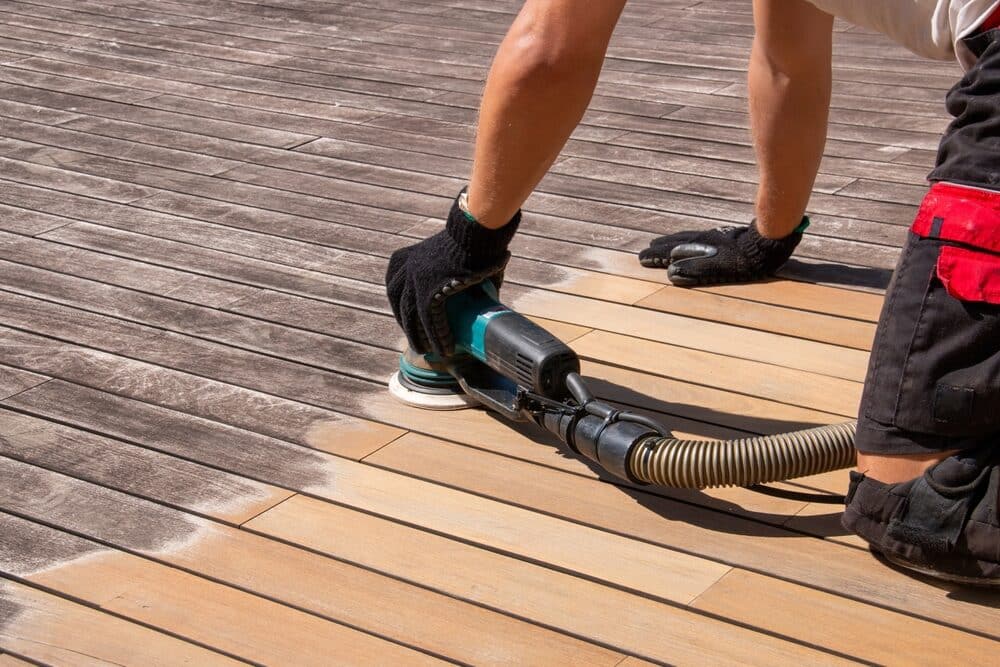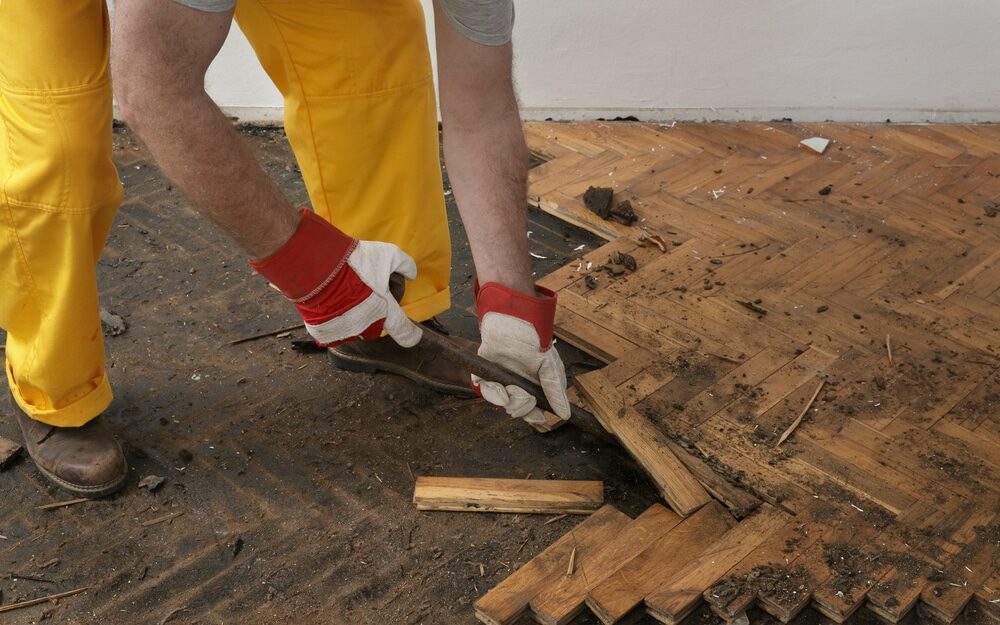London:
Nationwide:
What is a Floating Hardwood Floor? A Comprehensive Guide
Posted on April 27, 2023
Blog
The Ultimate Guide to Understanding and Installing Floating Hardwood Floors
As a homeowner or a DIY enthusiast, you may have come across the term “floating hardwood floor” while browsing for flooring options. It’s a popular choice for both residential and commercial spaces, and for good reason. Floating hardwood floors are not only beautiful and versatile but also relatively easy to install. In this comprehensive guide, we’ll delve deep into the world of floating hardwood floors, discussing their benefits, installation process, maintenance, and more. So, let’s dive in and explore everything there is to know about floating hardwood floors!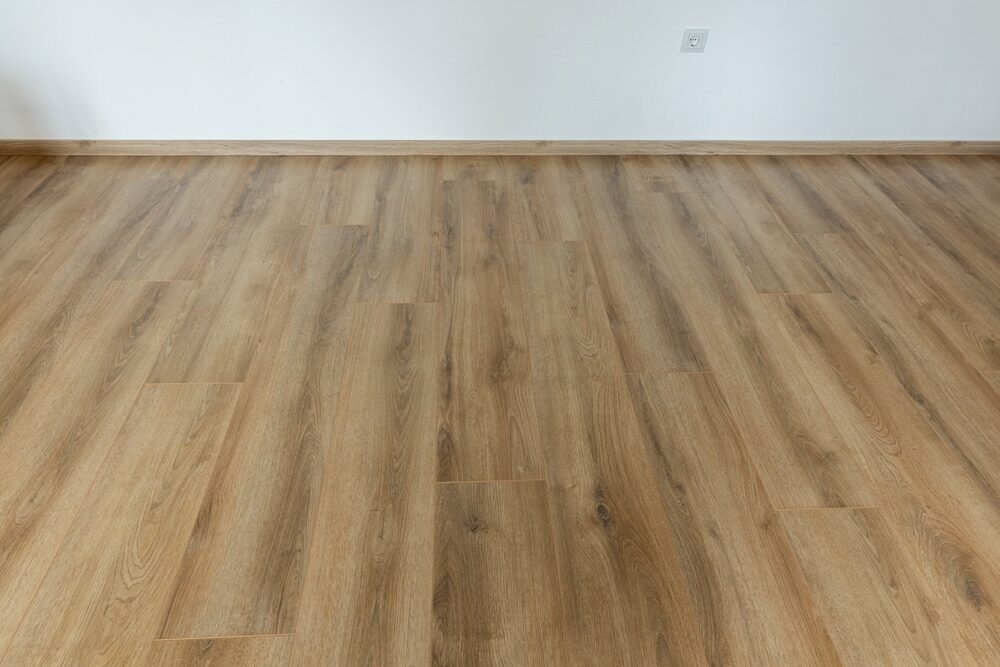
What is a floating hardwood floor?
A floating hardwood floor is a type of flooring installation that does not require the hardwood planks to be nailed, glued, or otherwise fixed to the subfloor. Instead, the planks are attached to each other using various interlocking mechanisms, such as tongue-and-groove or click-lock systems. This method creates a single, continuous floor surface that “floats” above the subfloor, expanding and contracting with changes in temperature and humidity.Types of Floating Hardwood Floors
There are two main types of floating hardwood floors: engineered hardwood and laminate flooring. Both offer a range of benefits and drawbacks, depending on your specific needs and preferences.- Engineered Hardwood Flooring Engineered hardwood flooring consists of multiple layers of wood with a thin veneer of real hardwood on the surface. The core layers are made of plywood, high-density fiberboard (HDF), or other composite materials, providing enhanced stability and resistance to moisture. Engineered hardwood is available in a wide variety of wood species, finishes, and plank widths, allowing you to achieve the look and feel of solid hardwood flooring at a lower cost.
- Laminate Flooring Laminate flooring is a more budget-friendly alternative to engineered hardwood. It is made up of a high-density fiberboard core, a photographic image layer that mimics the appearance of wood, and a protective top layer that resists scratches, stains, and fading. Although laminate flooring doesn’t have the same natural warmth and texture as real wood, it offers excellent durability and ease of maintenance, making it a suitable choice for high-traffic areas and households with pets or children.
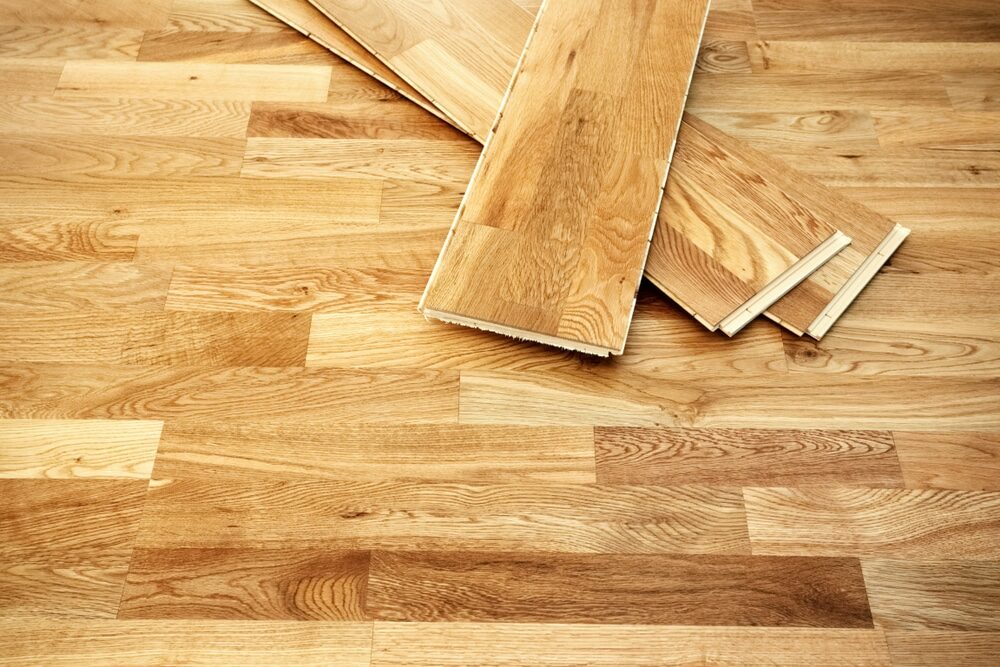
Benefits of Floating Hardwood Floors
- Easy Installation One of the main advantages of floating hardwood floors is their ease of installation. The interlocking systems eliminate the need for nails or adhesives, making the process quicker, less messy, and more beginner-friendly than traditional methods. Furthermore, floating floors can be installed over various subfloor types, including concrete, plywood, and even existing flooring, reducing the need for costly subfloor preparations.
- Versatility Floating hardwood floors are suitable for almost any room in your home, from living spaces and bedrooms to kitchens and basements. As they are not directly attached to the subfloor, they can better withstand fluctuations in temperature and humidity, making them an ideal option for areas with radiant heating systems or high moisture levels.
- Cost-Effectiveness The installation of floating hardwood floors is generally less expensive than that of traditional hardwood floors. The absence of nails, glue, and other materials, as well as the reduced need for subfloor preparation, can result in significant cost savings. In addition, engineered hardwood and laminate flooring options are typically more affordable than solid hardwood, allowing you to achieve a high-end look without breaking the bank.
- Easy Repair and Replacement Should a plank become damaged or worn, it can be easily replaced without affecting the rest of the floor. This is particularly beneficial for laminate flooring, which cannot be sanded and refinished like solid or engineered hardwood.
- Eco-Friendliness Many engineered hardwood and laminate flooring options are made from sustainable, renewable materials and use low-VOC (volatile organic compound) adhesives, making them an environmentally friendly choice. Additionally, the production process for engineered hardwood uses less of the valuable hardwood resource compared to solid hardwood, contributing to the preservation of forests.
- Improved Acoustics Floating hardwood floors can help reduce noise transmission between rooms thanks to their unique installation method. By incorporating an underlayment beneath the flooring, sound is absorbed and dampened, creating a more peaceful and quiet environment within your home.
Installation Process for Floating Hardwood Floors
- Preparation Before installing a floating hardwood floor, ensure that the subfloor is clean, level, and dry. Remove any existing flooring, if necessary, and repair any cracks or uneven areas. It’s also crucial to allow the flooring materials to acclimatise to the room’s temperature and humidity for at least 48 hours before installation.
- Underlayment Choose an appropriate underlayment for your floating hardwood floor. This layer, typically made of foam, cork, or rubber, provides cushioning, sound absorption, and moisture protection. Roll out the underlayment across the entire floor, ensuring that there are no overlaps or gaps.
- Layout and cutting Plan the layout of your flooring, considering the direction and pattern of the planks. Measure and cut the planks as needed, using a saw or specialised cutting tool. Remember to leave an expansion gap of approximately 14 inches around the perimeter of the room to accommodate any natural expansion and contraction of the floor.
- Installation Begin laying the planks, starting in a corner and working your way across the room. Connect the planks using the tongue-and-groove or click-lock system, ensuring a snug fit. Stagger the end joints between adjacent rows to create a more visually appealing and structurally stable floor.
- Finishing Touches Once the entire floor has been installed, trim the excess underlayment and install baseboards or quarter-round moulding to cover the expansion gap. Add any transition strips, if necessary, to create a seamless transition between different flooring types in adjacent rooms.
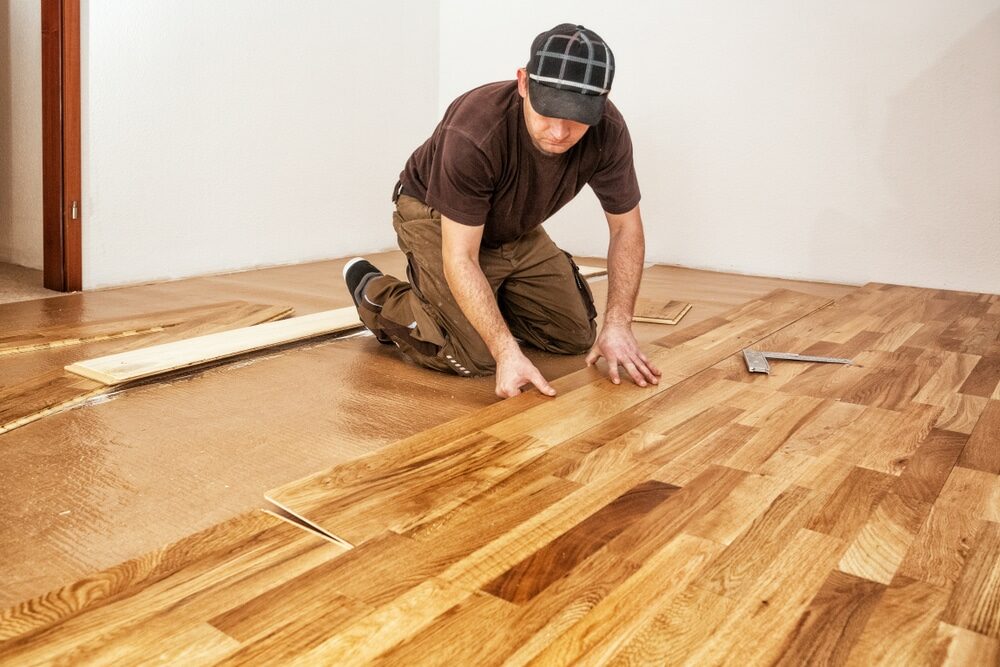
Maintenance and Care of Floating Hardwood Floors
- Regular Cleaning Sweep or vacuum your floating hardwood floor regularly to remove dirt, dust, and debris. Use a soft-bristle broom or a vacuum cleaner with a hardwood floor attachment to avoid scratching the surface.
- Spills and stains Clean up spills immediately to prevent water damage, especially on engineered hardwood and laminate flooring. Use a damp cloth or mop, and avoid using excessive water or harsh chemicals.
- Protective Measures Place felt pads under furniture legs to prevent scratches, and use area rugs or mats in high-traffic areas to minimise wear and tear. Be mindful of your pets’ nails and keep them trimmed to avoid damage to your floor.
- Refinishing Engineered hardwood floors can be sanded and refinished, depending on the thickness of the hardwood veneer. However, this process can typically only be done once or twice in the floor’s lifetime. Laminate flooring cannot be refinished, so damaged or worn planks will need to be replaced.
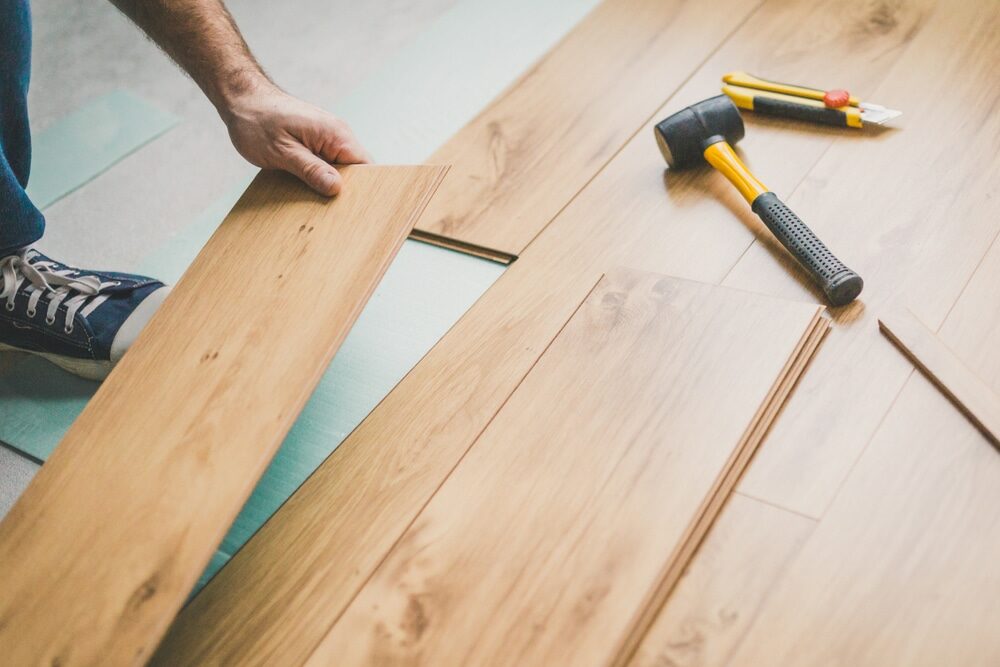
Some Useful Links:
Conclusion
Floating hardwood floors offer a range of benefits, including easy installation, versatility, and cost-effectiveness. With proper care and maintenance, they can provide a beautiful, durable, and long-lasting flooring solution for your home. Whether you choose engineered hardwood or laminate flooring, a floating hardwood floor can enhance the aesthetics and value of your living space.More from our Blog:
Mastering Floorboards Sanding: Tips & Techniques for Stunning Results Hardwood Floor Sanding in London: A Journey Through Time Key Questions to Ask before Selecting A Floor Sanding Company
Sanding
We provide virtually dust-free sanding with our continuous belt machinery with mobile extraction units, giving you a safer environment for your family.
Oiling
This organic finish not only adds beauty to your home but also has exceptional water-repellent characteristics, making it easier to clean and maintain.
Waxing
This natural floor finish offers the softest and most mellow appearance – and leaves your floor able to breath.
Buffing
Using soft buffing machines (and hand-polishing where required) will bring a wonderful sheen to your newly-finished floor.
Repairs
We offer a full assessment of your wooden floors to determine what repairs are needed to provide the perfect working surface for the later stages of sanding, staining and sealing.
Restoration
We offer a comprehensive restoration process designed to address floors that are improperly fitted or damaged over time through wear and tear.
Request a fixed price quote for your wood floor restoration now
Simply enter your postcode below to get started.
Services
Wood Floor Sanding Wood Floor Restoration Wood Floor Scratch Repair Squeaky Wood Floor Repair Parquet Floor Sanding Parquet Floor Restoration Commercial Floor Sanding School Floor Sanding Gap FillingCopyright © Mr Sander®
Privacy & Cookies Terms & Conditions Complaints Procedure Cancellation Rights Sitemap